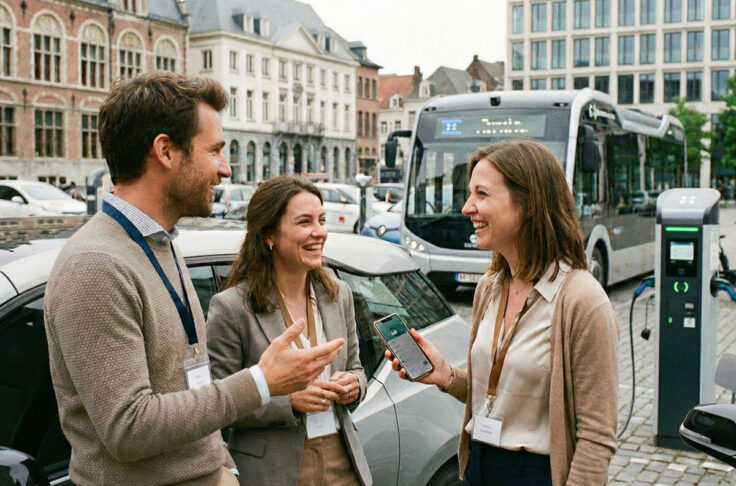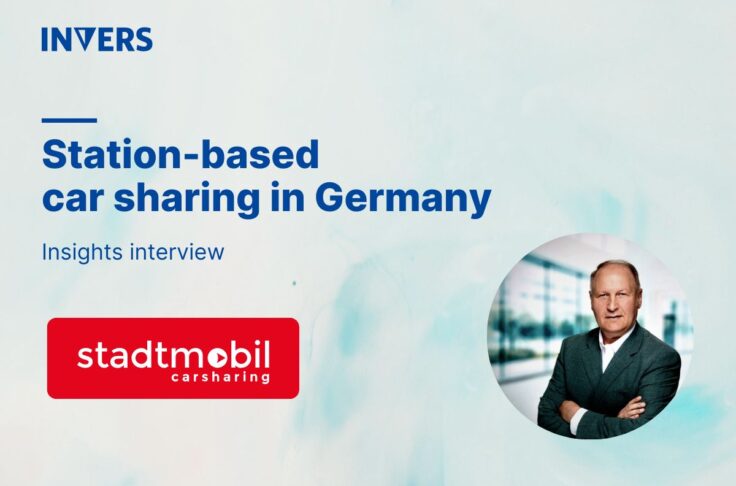How digitalization and data make shared mobility flexible
Summary
Digitalization and the data that it generates enable the flexibility needed for shared mobility to be successful. They fueled the boom in shared mobility that created many start-ups, made existing shared mobility operators expand their offerings, and are also enticing traditional car rental companies to enter the space. Today’s shared mobility operations need digitalization and data in several key areas in order to compete and be successful.

The concept of sharing vehicles has evolved a lot over recent years thanks to advances in technology. At first, when sharing took place within closed communities, users got by with paper-based booking and physical key exchanges. Digitalization then made vehicle sharing possible at scale, flexibly, to a wider base of users. In this first part of a series on shared mobility data uses and applications, we look at how operators use digitalization and data to enable the flexibility that defines shared mobility.
Flexible and contactless rental starts and ends
Let’s look at recent successes of campervan sharing to see how ditigalization lets operators give their clients more flexible services. The traditional industry standard for renting campervans is fairly rigid. It’s often not possible to book vans spontaneously for short-term, and clients must return vehicles at a set time.
Recently however, Roadfans and Cabana have started using sharing technology to build more flexibility into their systems. Both sharing operators installed telematics in their vehicles to enable a fully app-based, contactless experience for their users. Clients use smartphones to interact with their van’s telematics via wi-fi or Bluetooth to unlock the doors and the immobilizers at the start of their trip, and to lock both at the rental’s end.
Contactless pick-ups and drop-offs are particularly in demand during the pandemic, but they have benefits during “normal” times as well. A fully app-based process that forgoes the need for clients and employees to exchange keys means users can start and end their journey at times that suit them best, while the operators don’t need to pay staff to wait around for late returns. It also helps enable free-floating sharing operations, where users begin and end their trip at different locations within designated zones.
Variations of pricing models
Digital vehicle sharing technology not only frees operators from making clients come to specific locations, but it also lets them offer pricing that doesn’t restrict users to half-day or full-day minimums to accommodate business hours. This flexibility allowed carsharing pioneers like car2go (re-named to SHARE NOW since a merger) to offer free-floating services in Europe and North America, while free-floating micromobility operations boomed in Europe and Asia.
Operators are starting to analyze their data for differentiation opportunities, leading to many creative pricing structures and offers. Detailed insights on vehicle usage by type, location, time of day, day of week and other factors allows providers to quickly fine-tune and diversify their pricing to meet client needs and maximize profits. For example Cooltra, a micromobility provider, offers a smorgasbord of different packages, rates, and passes for its services. Lime doesn’t charge an unlock fee for rides on its e-scooters if the user pays for a monthly membership. Various operators offer pricing packages based on combinations of membership, distance traveled, and trip duration. All this would not be easily possible without technology and data to identify users and serve them custom pricing.
Location tracking for better monitoring
Vehicle location tracking is the third digital technology-enabled feature that makes flexible free-floating services possible. Clients rely on accurate positioning to find available vehicles and end their trips within defined service areas. It also allows other geofencing-based features, such as forcing kick scooters and e-bikes to slow down in pedestrian-only zones. Operators also use location tracking to monitor lost, stolen, or towed vehicles.
Additionally, location data lets free-floating operators know which areas don’t have enough vehicles to meet demand so they can “re-balance” their fleets. This helps to maximize profits by matching supply to demand, and it may also be a requirement of the city regulators.
Reliable fleet maintenance and operations
Digitalization and data also play an big role in making shared mobility maintenance and operations more efficient. Vehicle telematics provide data on fuel levels, battery charge levels, odometer readings, washer fluid levels, and other basic vehicle info. Operators then streamline maintenance by sending crews out or bringing vehicles in only when data tells them it’s required.
Finally, vehicle data also lets users know if the vehicle is not in a proper state to end the trip. Did the last user lock the doors? Did he/she roll up the windows? Is the immobilizer locked? Is the vehicle parked in a designated area? Until the answers to all the questions are “yes,” the user won’t be able to finish the trip. This ensures that vehicles are in good shape for the next client without the operations team needing to inspect them.
Subscribe to our sharing technology news updates so we can notify you when we will publish our next blog post on advanced uses of shared mobility data such as driving analysis, battery lifecycle management, figuring out the best times to refresh fleets, and more.


